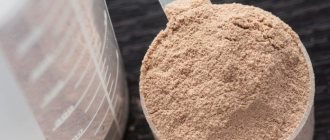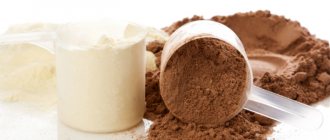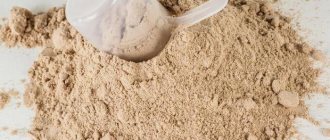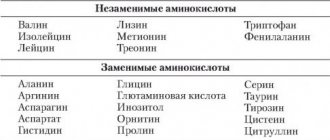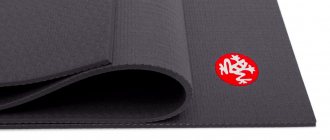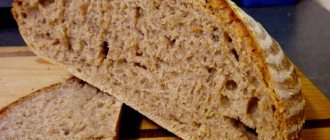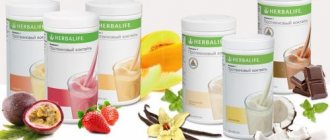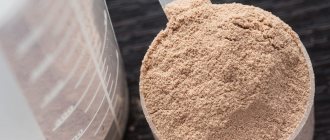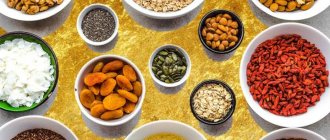Chicken egg whites[edit | edit code]
Whole egg white has the highest digestibility and is considered the standard against which all other proteins are measured. As you know, a chicken egg consists of a protein, which is almost 100% albumin (ovoalbumin) and a yolk, which contains 7 different proteins - albumin, ovoglobulin, coalbumin, ovomucoid, ovomucin, lysocin, avidin.
It should also be noted that eating large quantities of raw chicken eggs is not recommended, since they contain an inhibitor (a substance that significantly slows down the digestion process) of the digestive enzyme trypsin. Moreover, the protein avidin, contained in the yolk, eagerly attaches vital biotin (vitamin H), forming a strong complex that is not digested or absorbed by the body. Therefore, it is recommended to consume chicken eggs only after heat treatment (at 70°C the trypsin inhibitor is destroyed, and at 80°C active biotin is released from the biotin-avidin complex).
Japanese and Taiwanese scientists decided to find out the effect of egg white on the human body. Three groups of female volunteers participated in the experiment. All of them were practically healthy, but with elevated cholesterol levels in the blood. The subjects ate a diet-prepared diet of 1,750 calories per day with a daily intake of 70 grams of protein. Fat in the subjects' diet made up 20 percent of protein from total calories. The first group got 30 percent of their protein from egg whites, the second group from cheese, and the third from soy cheese. Body weight and daily exercise remained constant throughout the study.
As it turned out as a result of the experiment, in the groups that received protein from egg whites and soy cheese, the total level of cholesterol decreased, and in the first group, in addition, the level of “good” lipoproteins increased. In the second group, which received cheese, their blood cholesterol levels increased.
This data reveals the beneficial qualities of egg whites, but what about eggs in general?
Another study published in the Annals of Nutrition and Metabolism in 1996 found that eating eggs throughout the day lowered high-density lipoprotein (good cholesterol) levels. It is believed that the latter prevents the development of atherosclerosis. Although at first glance this indicates that eggs are not that healthy, a closer look reveals a simple solution. The negative effects of eating eggs are associated with increased oxidation, which is favored by eating whole eggs due to their high polyunsaturated fat content. Polyunsaturated fats are especially prone to oxidation, including the much-touted omega-3 fats found in fish and flaxseed oil. However, you can easily prevent increased fat oxidation simply by consuming antioxidants. They include vitamins C, E, PP, selenium and beta-carotene. Such natural antioxidants stabilize polyunsaturated fats, preventing oxidation.
This is all theory, but how does it work in practice?
90% of bodybuilders are under 30 years of age and do not have problems with high cholesterol levels in the blood; these factors almost completely eliminate the possibility of pathological changes in fat metabolism expressed in hypercholesterolemia. In addition, cholesterol is an integral part of cell membranes, and in a growing body, a lack of cholesterol is fraught with inhibition of physical development and other problems. And since bodybuilding involves, first of all, the growth of muscle mass, elementary logic dictates that cholesterol costs will be higher than in the population. And most importantly, every bodybuilder should include additional vitamins in his diet. As mentioned above, vitamins A, C and E have pronounced antioxidant properties, which ensure almost complete safety of eating whole eggs. As for fats, when gaining body weight, their amount will not affect the overall results, since their relative content is not so high. We must not forget that the yolks contain a large amount of vitamins, microelements and bioactive substances.
Thus, it becomes clear that eating whole eggs is not only not dangerous, but also useful, especially when gaining weight. If you are losing weight, you should skip the yolk, but be sure to include protein in your diet.
For the production of nutritional supplements, both whole egg white and separately egg albumin are used. Sports nutrition made on the basis of egg whites is devoid of all the disadvantages of whole eggs, while completely preserving their beneficial qualities, so the latter is considered one of the highest quality and most effective in all respects. Relatively slow absorption makes it possible to consume egg whites while losing weight, without fear of slowing down the weight loss process.
Whey proteins[edit | edit code]
Whey proteins (lactalbumin, lactoglobulin and immunoglobulin) have the highest rate of breakdown among whole proteins. The concentration of amino acids and peptides in the blood increases sharply within the first hour after taking a diet based on whey proteins. At the same time, the acid-forming function of the stomach does not change, which eliminates disruption of its functioning and the formation of gases. The digestibility of whey proteins is exceptionally high.
The amino acid composition of whey proteins is closest to the amino acid composition of human muscle tissue, and in terms of the content of essential amino acids and branched chain amino acids (BCAAs): valine, leucine and isoleucine, they are superior to all other proteins of animal and plant origin. In addition, approximately 14% of whey proteins are in the form of hydrolysis products (amino acids, di-, tri- and polypeptides), which initiate digestion and participate in the synthesis of most vital enzymes and hormones. Whey proteins also significantly reduce blood cholesterol levels.
A scientist named Bounous and his colleagues from McGill University (Canada) conducted a series of experiments that showed that whey protein was significantly superior to egg white, soy, beef and fish in terms of improving responses at the cellular and hormonal levels. Careful analyzes have shown that the immunostimulating effect of the serum is associated with its amino acid composition - the serum contains the right amino acids in the right quantities. Additionally, whey protein has been shown to increase levels of glutathione, one of the body's most important antioxidants. Extensive practical experience also shows that whey protein is the best protein supplier for athletes.
It has been experimentally established that the protein content in nutritional supplements based on whey proteins is optimal at the level of 60-65%. Further increase in protein content requires the introduction of vitamin-mineral formulas into the mixture.
The main source of whey proteins is sweet whey produced during the production of rennet cheeses. Sweet whey itself is not used in the production of food additives, which is due to its low protein content (about 5%) and the presence of large amounts of lactose (milk sugar), the main substance that causes intolerance to dairy products in some people.
Whey protein concentrate[edit | edit code]
This is the first derived form of whey protein. The serum is passed through ceramic membranes with incredibly small holes. They freely pass molecules of fats and the carbohydrate lactose, but retain larger protein fractions. The problem is that it is technically impossible to obtain holes of the same diameter, so the filtration is not very clean. A mixed mass is deposited on the membrane, the protein content of which is 35–85%. Thus, whey concentrate is not the purest protein in the world. It may contain quite a significant amount of fat and lactose, which stimulates gas formation. That is why concentrate is the cheapest form of whey protein on the sports nutrition market, and can only be considered a good option if you have limited financial resources.
Read the main article:
Whey Protein Concentrate
Whey protein isolate[edit | edit code]
Isolate is a much purer product than concentrate. It is obtained by long-term filtration or ion exchange. As a result, the manufacturer receives a dry mass containing more than 95% protein fractions. There is almost no lactose and fat in the isolate, which means that the isolate is ideal for taking to compensate for amino acid deficiency before and after training. Plus, isolate is much cheaper than hydrolyzate, so the general public can afford it. Many manufacturers cheat and, under the guise of whey protein, sell a mixture of all three types of protein: isolate, concentrate and hydrolyzate. Naturally, such products contain the most cheap concentrate – 60–70%. You should choose supplements in which isolate is the main or only component.
Read the main article:
Whey Protein Isolate
Whey protein hydrolyzate[edit | edit code]
The hydrolyzate is obtained by hydrolysis, during which large protein molecules are cut into separate fragments. The body receives protein ready for immediate absorption, so the hydrolyzate penetrates the muscle fairly quickly. However, this type of whey protein has one significant drawback - it is expensive. Only people with means can afford it, since hydrolyzate is the most expensive type of protein. Also, if you see “whey protein hydrolysate” on the label, don’t rush. Modern equipment allows you to configure hydrolysis in different ways and thereby save money. According to the report of regulatory organizations, there are many hydrolysates that contain no more than 50% of small protein fragments.
Today, the sports and medical nutrition market offers a huge variety of forms of protein-containing products: these are cocktails, both in powders and in finished form, with many different flavors, soups, energy bars, protein cookies, chocolate, protein pastes, nut halva, and everything this can be bought in pharmacies. In addition to whole proteins, mixtures of all essential amino acids are offered - in the form of powders, liquid mixtures and even ampoule forms. Moreover, they offer not only mixtures of all amino acids, but also products containing individual amino acids or a complex of several components: L-glutamine, which protects muscle tissue during intense exercise, BCAA amino acids, which form the basis of all muscle metabolism; a mixture of L-ornithine, L-arginine and L-lysine to stimulate the secretion of growth hormone, etc. Amino acid complexes are practically digested protein. Therefore, they are absorbed most quickly.
Read the main article:
Protein hydrolyzate
Why do non-athletes need protein?
The use of protein mixtures has no age restrictions. It is obtained exclusively from food raw materials. It is well absorbed and physiologically compatible with the body. The high need for it is due to the lifestyle that modern people lead.
Stress, physical inactivity, and short-term physical activity helped reduce the need for carbohydrates and fats. However, given the vital importance of protein in providing energy to the body, the amount of protein required has remained unchanged.
This situation is not reflected in the food industry. The abundant fast food available contains a high concentration of fats and carbohydrates, but there is practically no protein in it. The result of this is protein starvation, which protein shakes are designed to counteract.
Casein[edit | edit code]
As a rule, casein is introduced into infant formula, which, according to modern concepts, is considered biologically justified. So, when it enters the stomach, casein coagulates, turning into a clot that is digested for a long time, providing a relatively low rate of protein breakdown. This leads to a stable and uniform supply of amino acids into the body of an intensively growing child. If this rhythm of absorption is disrupted (the use of formulas based on whey proteins), the child’s body at this stage of development does not have time to absorb the intense flow of amino acids, which can lead to various kinds of deviations in the child’s development. Therefore, nutritionists recommend using casein-based formulas for children deprived of their mother’s breast. As for an adult, low digestibility, as well as the slow passage of casein clots through the gastrointestinal tract, are unacceptable, especially with increased physical activity. Therefore, dietary supplements based on casein (caseinates) alone are likely to be ineffective.
However, a way out can be found through the use of protein compositions based on casein and whey proteins. After appropriate research, the maximum protein efficiency ratio and the corresponding proportions of whey proteins and casein were determined. This proportion turned out to be 63:37 with a protein efficiency coefficient of 3.49. The obtained value of biological value for this protein ratio turned out to be very high and, judging by the literature data, not inferior to those for other high-value proteins of animal origin.
In terms of digestibility, it gradually increased as the whey protein content increased. The data obtained confirmed the known fact that whey proteins are better digestible by digestive enzymes compared to casein.
Possible harm from eating protein
A contraindication to the use of the supplement is individual intolerance to protein or another substance included in the mixture. Against the background of dysbacteriosis or a lack of protein-digesting enzymes, indigestion may occur. If a similar situation occurs, you should reduce the dosage of the mixture or start taking enzymes. This can happen even when an athlete purchases the best supplement.
Protein cannot cause any harm to internal organs, but can lead to an exacerbation of existing kidney diseases. To eliminate this consequence, it is enough to exclude the additive from your diet. This will allow the body to return to its original state.
Igor September 23, 2016
Plant proteins[edit | edit code]
Proteins in plants, although often incomplete, when combined with each other make up a complete protein. The highest content of complete protein is in the combination of legumes + grains. Legume proteins - soy and pea, are rich in essential amino acids and have a value close to whey and egg proteins, expressed in PDCAAS [1].
As a rule, highly purified plant protein isolates are used in sports nutrition. Poor absorption of unrefined vegetable protein is caused by several reasons:
- thick membranes of plant cells, often resistant to digestive juices
- presence of digestive enzyme inhibitors in some plants, such as legumes
- difficulties in breaking down plant proteins into amino acids
Soy proteins[edit | edit code]
Soy protein is well balanced in amino acids, including essential ones. After consuming soy proteins, there is a clear decrease in blood cholesterol levels, so it is advisable to use them in the diet of overweight people, as well as people suffering from intolerance to dairy products. Soy contains vitamins and minerals necessary for the functioning of the body: vitamin E, the entire complex of B vitamins, potassium, zinc, iron, phosphorus. Soy turns out to be very beneficial for the health of both women - it helps fight osteoporosis in old age, reduces the risk of breast cancer, and men - here it helps solve problems with an enlarged prostate.
For the production of food additives, soy flour (contains 40-50% protein), soy concentrate (65-75%) and soy isolate (over 85%) are used.
However, this seemingly ideal product also has its drawbacks. One such imperfection of soy protein is the presence of an inhibitor of the digestive enzyme trypsin. Its quantity depends on the soybean processing technology. To get rid of the inhibitor, additional protein processing is required using enzymatic hydrolysis (fifty-minute pancreatin electrophoresis).
You've also probably heard that soy protein in large doses is not recommended for men. This is not entirely true. Soy is rich in so-called phytoestrogens. Phytoestrogens are a diverse group of natural, non-steroidal plant compounds that, due to their structure similar to estradiol, the human female sex hormone, can cause estrogenic and/or antiestrogenic effects.
PLANTS CONTAINING PHYTOESTROGENS: red clover, alfalfa, flax, licorice, red grapes, hops. CEREAL and LEGUMINE CROPS: wheat, soybeans, flax seeds, oats, barley, rice, alfalfa, lentils. Vegetables and fruits: apples, carrots, cabbage, pomegranates, etc. Drinks: bourbon and beer.
By now, most is known about the phytoestrogens contained in soy. These are primarily the isoflavones genistein and daidzein. Another soy phytoestrogen, glycitein, accumulates mainly in soybean sprouts. Isoflavones are present in plants mainly in the form of glycosides - compounds with sugars. In the intestine, under the influence of intestinal microflora, glycosides are hydrolyzed and break down into a sugary part and a non-sugary component, the so-called aglycone (that is, “sugar-free”). However, equol, a product of further transformation of daidzein, is most similar in structure to estradiol.
Experiments have shown that phytoestrogens are indeed capable of binding to the same receptors as estrogens, but they act much weaker. If we take the effect of estradiol as 100, then the effect of phytoestrogens will be estimated as 0.001-0.2 (depending on the type of phytoestrogen).
A classic example of the hormonal influence of phytoestrogens on mammals is “clover disease”, which occurs in sheep and other grazing animals. This disease was first described in the 40s of the 20th century in Australia. Farmers have noticed that sheep fed primarily on Trifolium subterraneum clover often experience infertility and other reproductive problems. It turned out that isoflavones of the biochanin-A group and formono-netin and coumestans (coumestrol), which have a hormone-like effect on sheep, are to blame for this. Apparently, reproductive disorders in sheep described in the scientific literature are explained, firstly, by the huge doses of absorbed isoflavones (a person would never eat so much soybeans), and secondly, by the fact that equol (and , possibly other active metabolites) are formed with greater efficiency than in the human intestine. In addition, unlike soybeans, clover is not a food product and is classified as a medicinal plant, and there is currently no data on its effect on the human body with long-term and regular use. There is also insufficient experimental data to justify the use of red clover extract instead of real estrogens in hormone replacement therapy.
Read the main article:
Soy protein
Soy protein and testosterone[edit | edit code]
On the Internet you can often find information about the allegedly negative effect of soy on testosterone levels in men. Only two studies - among a large number of studies conducted on this topic - found a link between decreased testosterone levels and soy consumption. In one study, isoflavone intake among study participants was particularly high, four times the amount typically consumed by men in Japan.[2] The researchers also did not make comparisons with a control group, that is, men who did not consume soy. It is therefore impossible to say that there is a difference between the two groups.
On the other hand, there are studies showing no effects on testosterone levels caused by soy consumption. A recent analysis of 32 scientific studies found that neither soy protein nor isoflavones had any effect on testosterone levels.[3] The scientists analyzed the data using several different statistical models. In all cases, similar results were obtained. Additionally, studies that were published too late to be included in this analysis showed the same thing—that soy did not affect testosterone levels. Among the many studies proving that soy isoflavones do not affect testosterone levels, there is one more that almost cast doubt on this fact.
The study was conducted at the University of Medicine and Dentistry of New Jersey and published in 2007: https://www.ncbi.nlm.nih.gov/pubmed/17416779 In this project, 13 men, ages 25 to 47, consumed 56 grams soy protein per day for four weeks. Testosterone levels were measured three times over four weeks - before the start of the study, after the first two weeks and at the end of the study. At the end of the study, after the final measurement, the scientists reported a 19% decrease in testosterone levels for the subjects. It later turned out that when publishing the results, a typo was made and facts were manipulated. The authors of the study did not mention that among the subjects there was a man with testosterone levels twice as high as normal. It was due to the decrease in his testosterone level that such data were obtained. Moreover, his testosterone concentration continued to fall after stopping the study and consuming soy protein. The study's authors later admitted that if it weren't for the man's testosterone levels falling, they would have had nothing to publish.
Thus, to date, a meta-analysis of scientific evidence[4] confirms that soy does not suppress testosterone secretion in men. Soy protein can serve as an animal alternative for men and women and is effective in lowering bad cholesterol and preventing cancer and osteoporosis, but is less effective than whey protein for gaining muscle mass.[5] In addition, the lack of effect on testosterone levels does not indicate the absence of estrogenic activity, which can lead to hypogonadism and even impotence.[6]
Pea protein[edit | edit code]
Pea protein used in sports nutrition is a highly purified isolate with a protein content of 88-90% and a high digestibility of 98% [7]. Pea protein contains a large number of essential and essential amino acids. In particular, it holds the record for the amino acid arginine and contains 8.7% per gram of protein, which is higher than any other protein source, including soy (7.6%) and egg white (5.1%). , casein (3.8%) and whey protein (2.3%) [8]. Arginine plays an important role in realizing muscle potential, as it helps release growth hormone, participates in creatine synthesis, in the formation of nitric oxide, and even improves erectile function [9].
Pea protein is also rich in the essential amino acid lysine and the essential amino acid glutamine. The benefits of pea protein can be enhanced when combined with other plant proteins, such as rice protein, as these products have complementary amino acid profiles[10]. Pea protein contains about 18% BCAA, which is not much less than casein, which typically contains 20% BCAA[11].
Pea protein is often used in the nutrition of vegetarian or vegan athletes. Peas contain 1000 times less isoflavones - phytoestrogens - than soy, which eliminates the risk of protein consumption affecting testosterone levels and makes pea protein preferable for male athletes[12]. Peas are not included in the list of major allergens and products that have any contraindications [13], which allows people who do not tolerate certain products (for example, lactose/milk, gluten/cereals, soy, nuts, etc.) Use pea protein in your diet as an allergen-free source of protein.
Read the main article:
Pea protein
Protein and its importance
In sports nutrition, protein is the protein that makes up almost all body tissues. When protein is broken down in the body, energy is released.
There are two groups of protein - independent amino acids, which are vital, and interchangeable acids. Proteins from the first group are found in liver, fish, meat, dairy products, and from the second - in various types of cereals.
For the body to function normally, the daily protein intake per kilogram of a person’s own weight must be at least 1.5 grams. The ideal ratio is 2 grams.
Notes[edit | edit code]
- https://www.hammernutrition.com/hnt/2897/
- Gardner-Thorpe D, O'Hagen C, Young I, Lewis SJ. Dietary supplements of soya flour lower serum testosterone concentrations and improve markers of oxidative stress in men. Eur J Clin Nutr 2003;57:100-6.
- Hamilton-Reeves JM, Vazquez G, Duval SJ, Phipps WR, Kurzer MS, Messina MJ. Clinical studies show no effects of soy protein or isoflavones on reproductive hormones in men: Results of a meta-analysis. J Am Dietetic Assoc (in press))
- Hamilton-Reeves JM, Vazquez G. Clinical studies show no effects of soy protein or isoflavones on reproductive hormones in men: results of a meta-analysis. Fertil Steril. 2010 Aug;94(3):997-1007. Epub 2009 Jun 12.
- Phillips SM, Tang JE, Moore DR. The role of milk- and soy-based proteins in supporting muscle protein synthesis and muscle protein accretion in young and elderly persons. J Am Coll Nutr. 2009 Aug;28(4):343-54.
- Siepmann T, Roofeh J. Hypogonadism and erectile dysfunction associated with soy product consumption.Nutrition. 2011 Jul-Aug;27(7-8):859-62. Epub 2011 Feb 25.
- https://www.pisane-cosucra.com/what-is-pisane/
- Pea Protein. The new power veggie. Muscle&Fitness magazine, August, 2012
- https://ru.wikipedia.org/wiki/%D0%90%D1%80%D0%B3%D0%B8%D0%BD%D0%B8%D0%BD
- https://www.bodybuilding.com/fun/wheys-vegan-alternatives-combining-pea-and-rice-protein.html
- https://www.biprousa.com/blog/view/2-28-2014-plant-protein-versus-dairy-protein-for-muscle-building
- https://en.wikipedia.org/wiki/Bodybuilding_supplement
- https://www.tsouz.ru/db/techreglam/Documents/TR%20TS%20PishevayaProd.pdf
